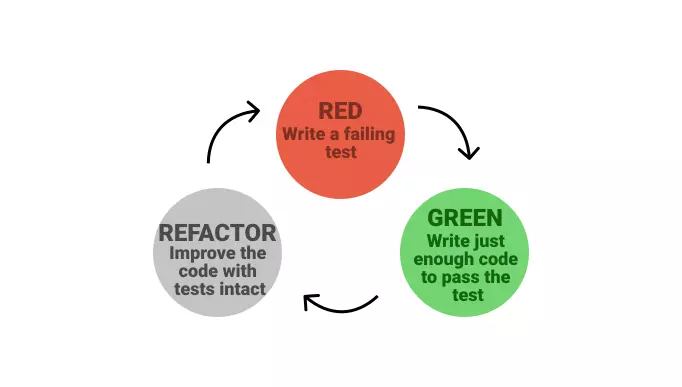
Test Driven Development (TDD) is a software development method that emphasizes writing tests before writing the actual code. In test-driven development, developers define the tests against which the program should be built before writing parts of the program. The goal of TDD is to build software that is maintainable and expandable and that bugs can be found in the early stages of development.
TDD is often associated with agile software development methodologies that emphasize incremental development, collaboration, and continuous improvement. Test-driven development is one of the main methods of agile development, which is very useful for realizing agile principles.
The basic steps of TDD are usually defined as follows:

Test-driven development has many advantages for software development. Test-driven development ensures that all code is tested and bugs are caught early in development, which can save time and money in the long run. Because bugs that are found early are usually easier and cheaper to fix than bugs that are found later in the development process.
Test-driven development encourages developers to write code that is modular, extensible, and easy to maintain. By writing tests before code, developers are forced to think about design and how to use it before writing code. This makes codes that are easier to understand, modify and develop.
Test-driven development increases collaboration and communication between developers. By writing tests before code, developers can ensure that they have a common understanding of the system design and that their code works seamlessly.
However, test-driven development is not without challenges. One of the biggest challenges of test-driven development is writing good tests. Tests that are too large or too complex can be difficult to understand and maintain. Additionally, writing tests can be time-consuming and may require significant investment in testing infrastructure.
Another challenge of test-driven development is that it may not be suitable for all projects or all developers. Some developers may find it difficult to write tests before code, or they may prefer to write tests after code is written. In addition, some projects may have requirements or constraints that make it impractical or difficult to implement the principles and rules of test-driven development.

Test-driven development is a powerful software development method that can help teams build better software. By writing tests before code, developers can catch bugs earlier, write more modular and maintainable code, and improve collaboration and communication. However, test-driven development also has its challenges and may not be suitable for all projects or all developers. Nevertheless, test-driven development remains a valuable tool in the software development toolbox, and developers who master it are likely to be more effective and productive in their work.

I am Reza Babakhani, a software developer. Here I write my experiences, opinions and suggestions about technology. I hope that what I write is useful for you.
leave a comment